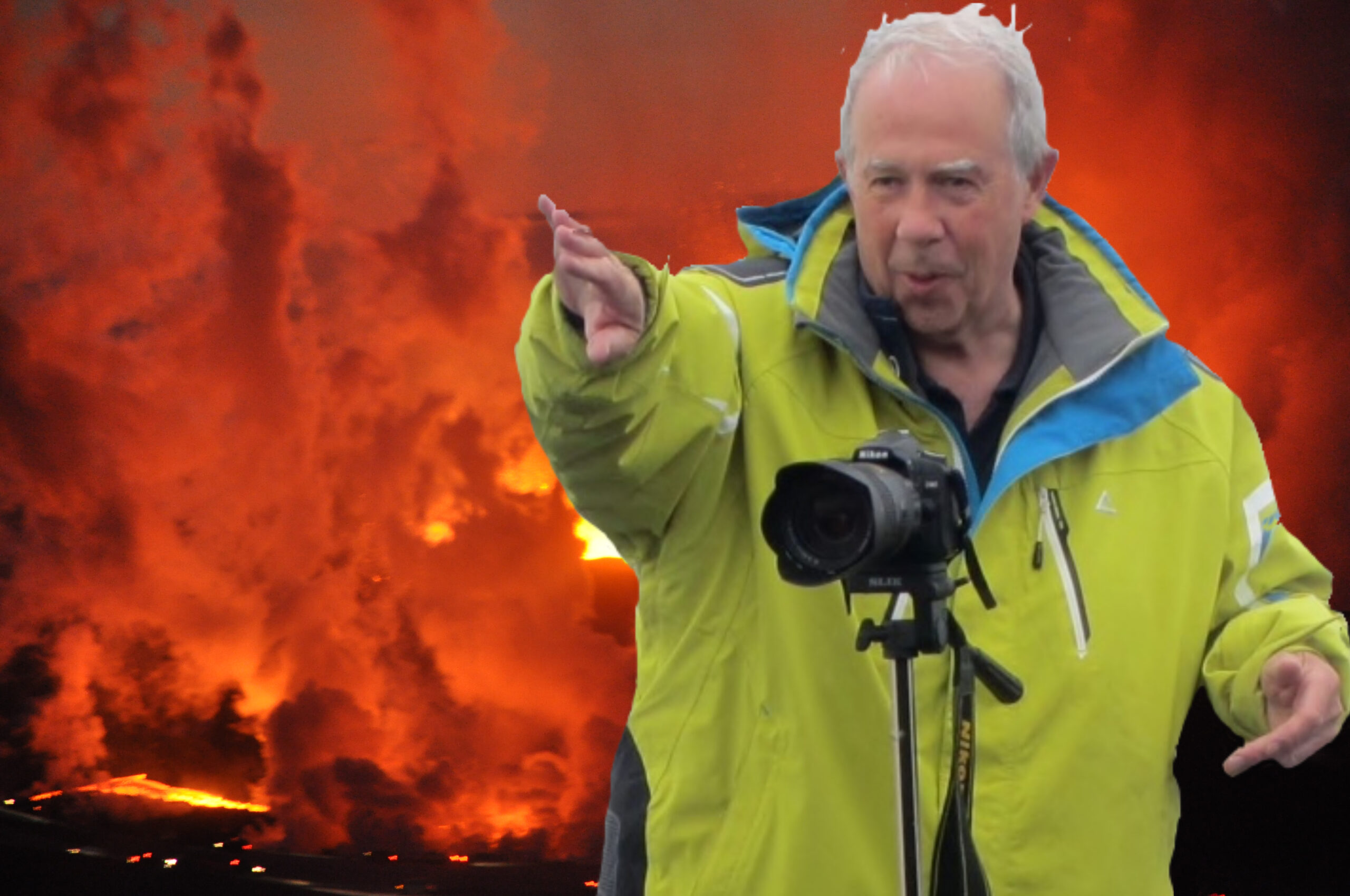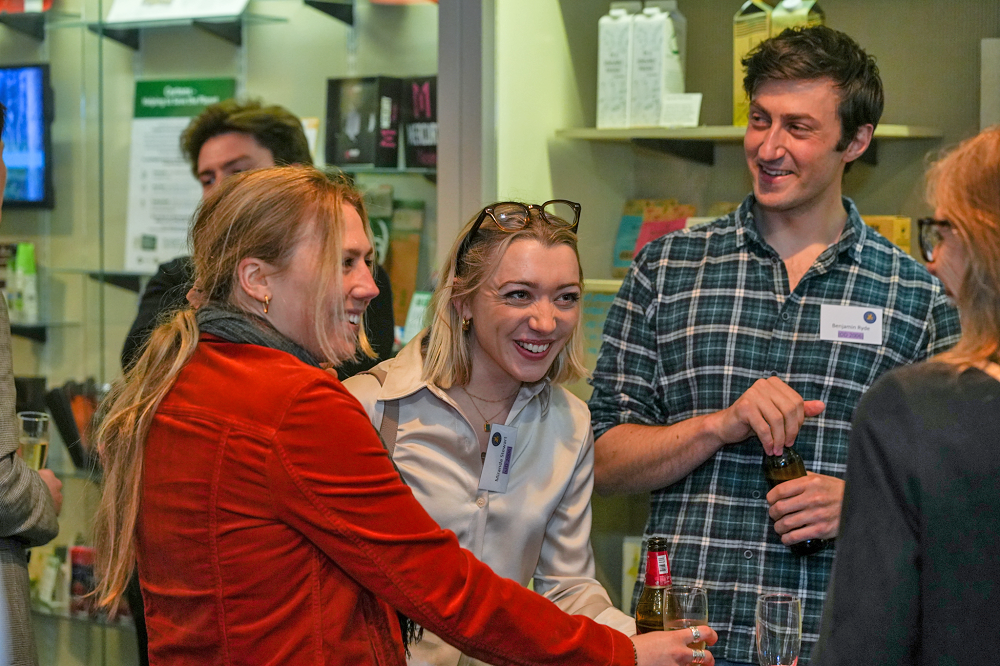Do you find the Icelandic volcano Eyjafjallajökull difficult to pronounce? Well, the recent eruption in southwest Iceland has spawned a new 36-letter word that is surely designed to flummox us all: Brennisteinsmengunardreifingarspáin, which translates as ‘the forecast of the sulphur gas pollution dispersion!’ The density of gas emissions is vital to anyone visiting and studying the eruption, and Tony Escritt (OD 1955) has been observing and reporting on these events since the 1960s.
____________

The recent eruption on the Reykjanes peninsula is just 20km southeast of Reykjavik, where the Mid-Atlantic Ridge is being stretched by deep-seated hotspots below. The structure is clear to anyone flying into nearby Keflavik airport, yet there has been no eruption here in historic times since 1240, in the SW peninsula. However, rumblings began in earnest, mid-February, with over 50,000 earthquakes at varying depths moving increasingly close to the surface. While residents of the small fishing town of Grindavík were growing tired of constant shaking, 9pm on Friday 19 March, saw the magma burst through into the Geldingadalur valley, spewing lava fountains 90m into the air while creating a cone from which the liquid effused at 5m/sec. The tap had been turned on, and the valley, which leads nowhere, was beginning to fill with lava.
Tony explained, most people would run away from a volcanic eruption, but to Icelanders, the eruption is a magnet. For the most part, Icelandic eruptions are effusive fissure eruptions. It is as though the Earth’s crust is leaking. It is as though the Earth’s crust is leaking. They may become explosive if the leak is beneath an icecap, as happened in 2010 when Eyjafjallajökull forced the grounding of flights worldwide. Gasses like sulphur dioxide tend to subside into hollows. Should any person or creature stray within the gassy zone, the result can be dangerous. Tony reported that the first indication of the gas is the acidic taste on the tongue and the natural reaction to try to filter the gas through clothing whilst rapidly removing oneself from the area. In recent years, gas masks and quality equipment are readily available. Within a week, the scientists and emergency services had established a live feed on YouTube, a weather station on-site, improved internet connection, and a waymarked footpath for the 3-hour walk to the site, as well as written guidelines for visitors. One of the big bus companies had even started to organise bus trips to the site.
It was unfortunate that, just before Tony’s recent visit in June 2021, the lava stream chose to overrun the main footpath to the erupting cone thus limiting study to the flow in the valley, Nátthagi. At the vent, the lava was rapidly disappearing into lava tunnels to continue within the flow to the very end. As the lava emerged slowly from the lava front it ignited the vegetation allowing the strong wind to whip the fire up the valley sides. In normal circumstances, the valley would be subject to the effect of weather extremes that create distinctive frost heave features in the soil. To see these features being overrun by lava brings home the fragility of life on Earth. Before returning home, Tony took to the air to view the boiling crater from a helicopter.
Tony credits the informal Dragon encouragement of inquisitiveness and exploration as the experience behind his passion for this unusual field of study. After five years at Oundle, and a 1962 Keble College research visit, he returned by sea in 1963, witnessing the eruption and birth of the island of Surtsey. This research trip whetted his appetite, but it was not until 1975 that Tony’s hoped-for opportunity arose. The ground had opened up in northeast Iceland, close to the Krafla geothermal power station. This was Tony’s chance to witness an erupting fissure at such close quarters that they were able to spend the night in sleeping bags alongside the lava stream. In the morning, the solidified surface lava was firm enough to walk across despite the glowing lava visible just 9” within surface cracks. With this experience, Tony was later invited to assist Sir David Attenborough while filming for the ‘Living Planet’ series and, later, some online educational videos.



